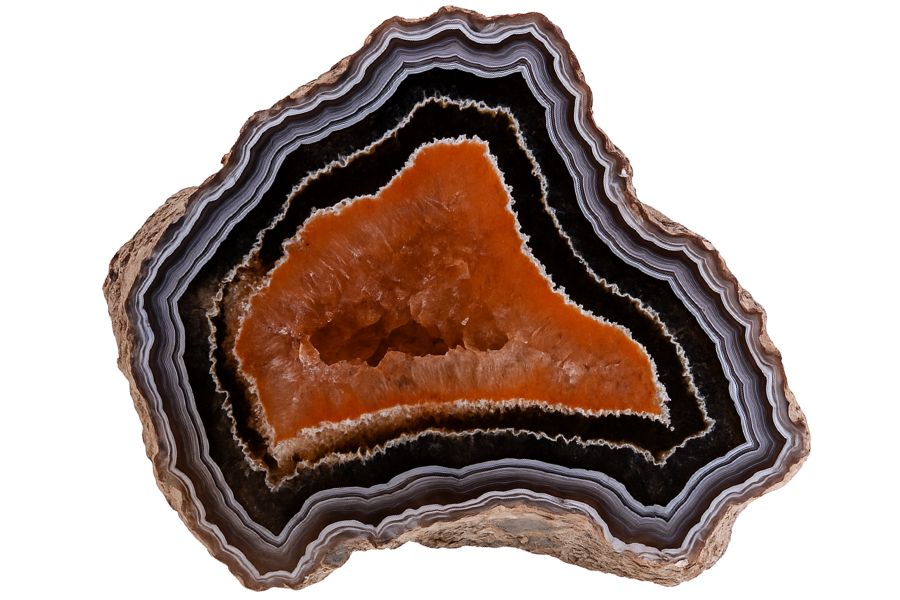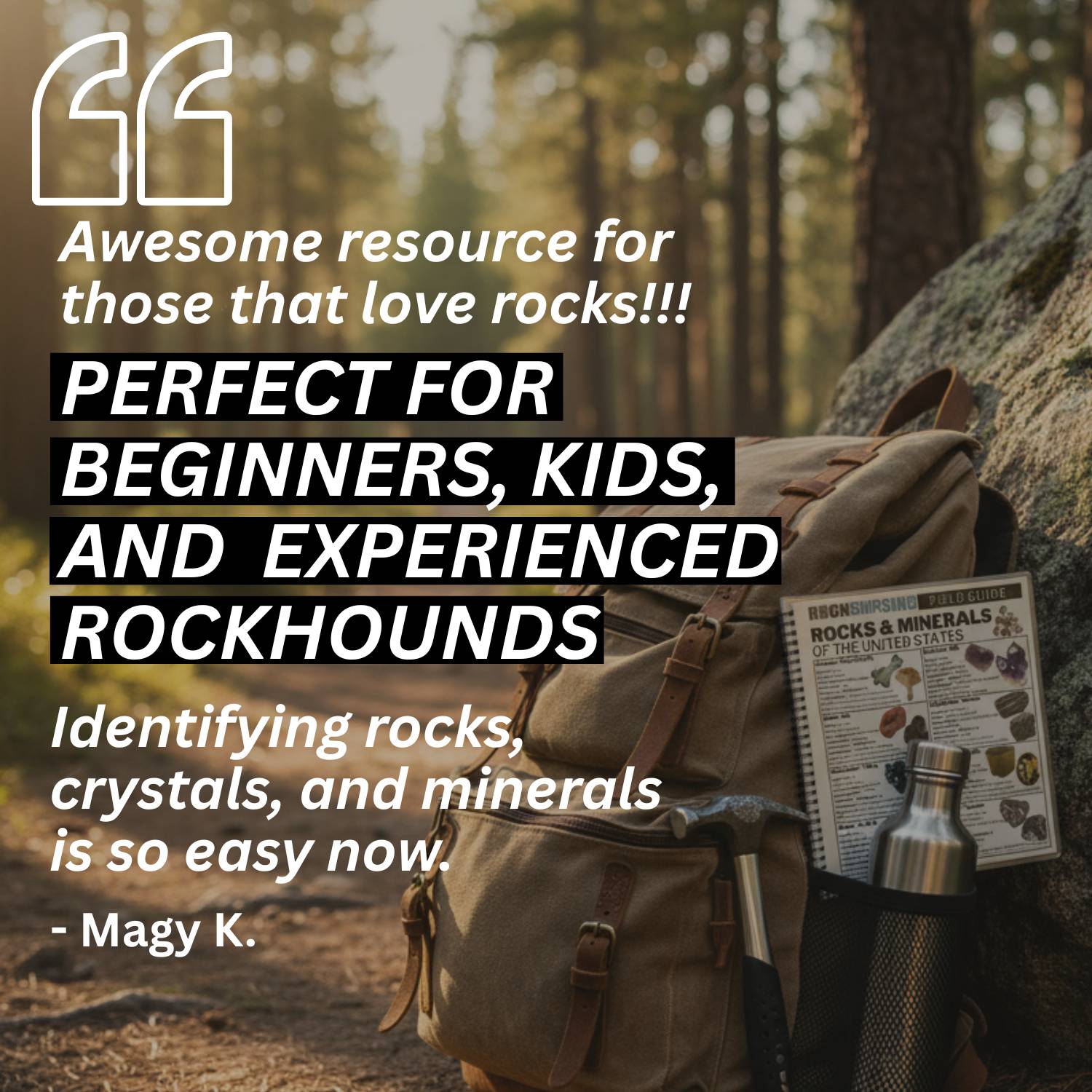If you want to spend a day hunting for agates in Missouri, you’re in for a real treat. It’s a wonderful place to look, and the state’s rivers and streams hold some beautiful stones waiting to be found.
The trick to a successful search isn’t just luck, it’s knowing exactly where these fantastic gems tend to settle. Figuring out which patches of terrain are worth your time is the best way to make sure you bring home a varied collection.
We’ll give you the inside scoop on where to start looking, saving you hours of searching. We’ll show you the areas with the highest potential so you can quickly begin adding these amazing Missouri agates to your finds.
What is Missouri Agate?
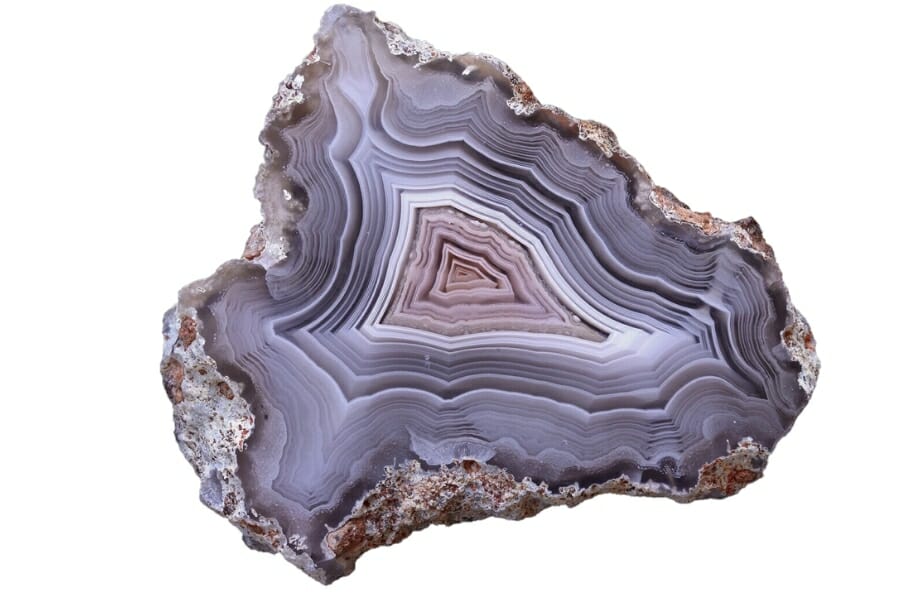
Agate is a kind of microcrystalline quartz, which is a silica-based mineral. It has a fine grain and bright, complicated patterns that often look like the inside of a tree trunk, with rings and other complex shapes.
These bands can vary in color, how clear they are, and how complicated they are. This makes each agate unique. Most of the time, the stone forms in volcanic rock or old lava where gas bubbles or holes give the mineral-rich liquid a place to harden.
For more information, we wrote an article about how much agates are worth.
Blue Lace Agate
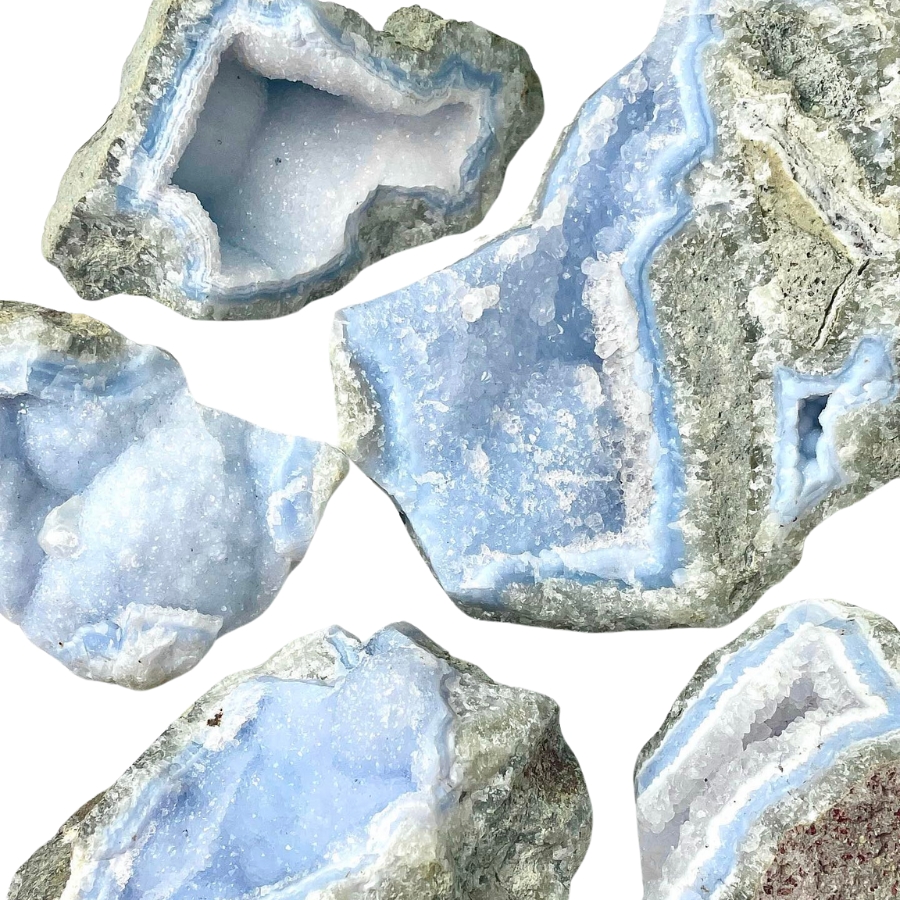
Blue lace agate is like the soft, sky-blue waves with lines that swirl and twist like delicate lace.
Its pattern comes from slow-forming layers of quartz, which create those beautiful, lace-like bands.
The bands of this agate type are often in shades of light blue, white, and sometimes a bit of grey. It’s different from other agates, which usually have more intense colors and stronger patterns.
The value of blue lace agate lies in its soft, tranquil look and the feeling of calm it brings. It’s often used in jewelry or as a decorative stone.
If you want REAL results finding incredible rocks and minerals you need one of these 👇👇👇
Finding the coolest rocks in isn’t luck, it's knowing what to look for. Thousands of your fellow rock hunters are already carrying Rock Chasing field guides. Maybe it's time you joined the community.
Lightweight, mud-proof, and packed with clear photos, it’s become the go-to tool for anyone interested discovering what’s hidden under our red dirt and what they've already found.
Join them, and make your next rockhounding trip actually pay off.
What makes it different:
- 📍 Find and identify 140 incredible crystals, rocks, gemstones, minerals, and geodes across the USA
- 🚙 Field-tested across America's rivers, ranchlands, mountains, and roadcuts
- 📘 Heavy duty laminated pages resist dust, sweat, and water
- 🧠 Zero fluff — just clear visuals and straight-to-the-point info
- ⭐ Rated 4.8★ by real collectors who actually use it in the field
Moss Agate
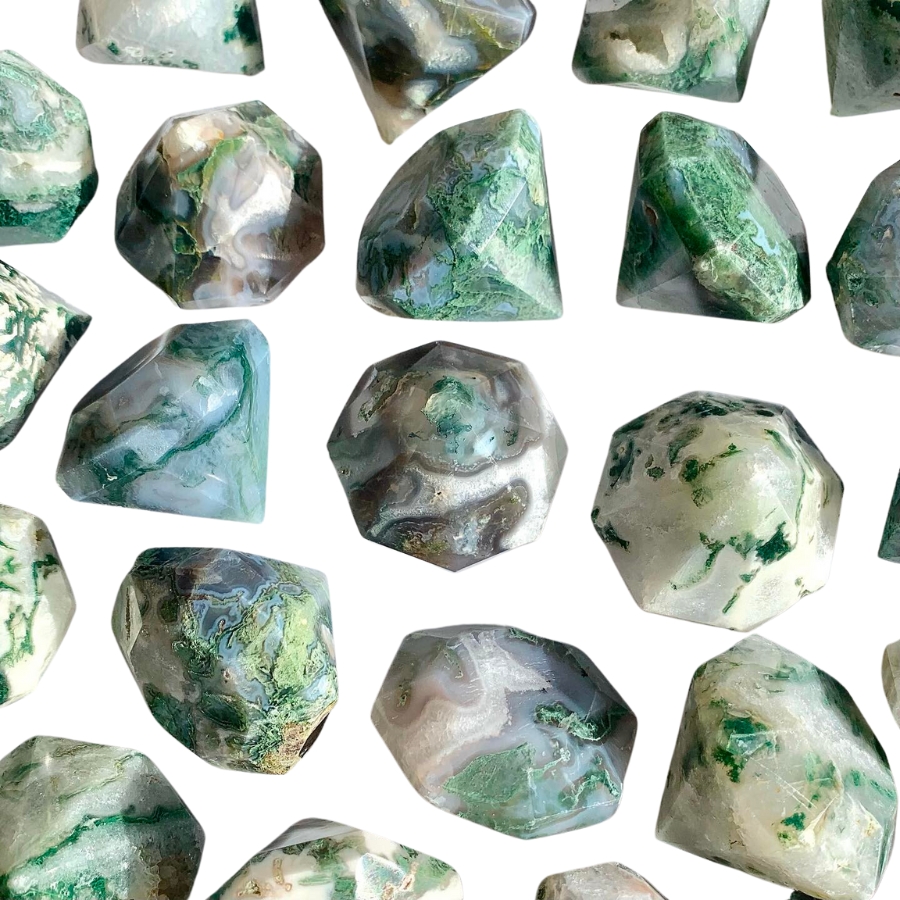
Instead of having the typical banding for which the different types of agates are known, moss agate has green inclusions that look like moss or trees.
These green patterns aren’t real plant material, though. They’re minerals like chlorite or iron oxide.
In some cultures, this type of agate is known as the “gardener’s stone” because of its green, plant-like appearance. It’s believed to help plants grow.
The price of moss agate can vary. It’s often quite affordable, but the more distinct and picturesque the green patterns, the more it might cost.
Fire Agate
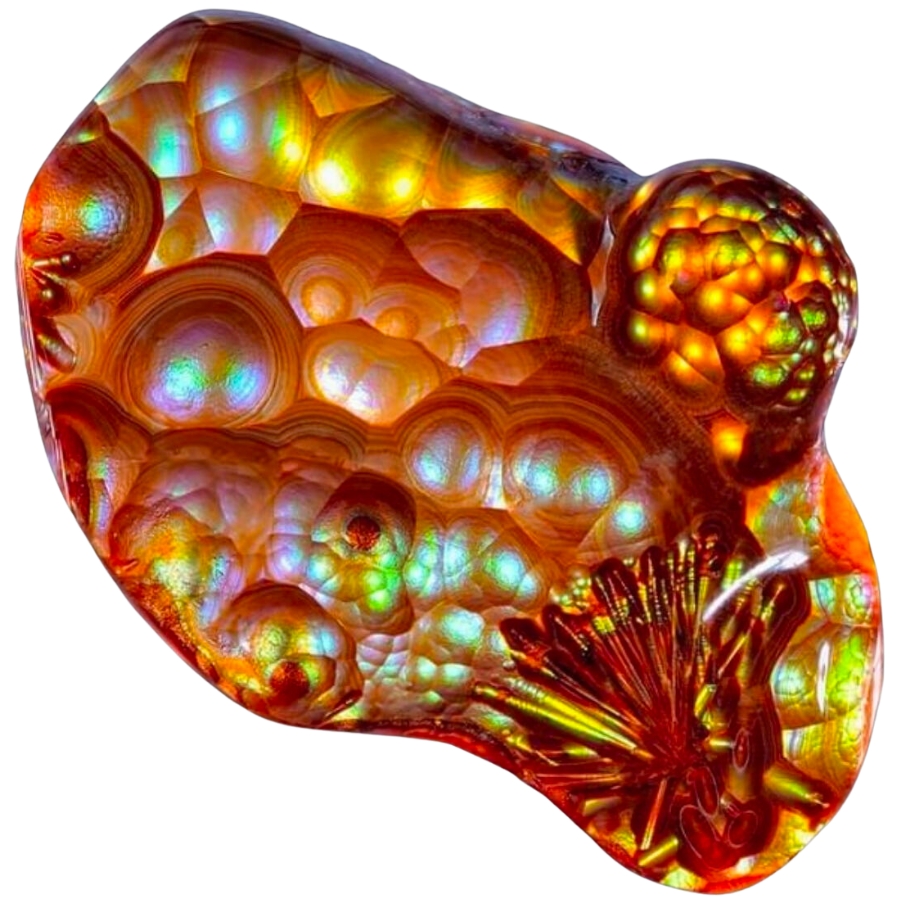
Fire agate is known for its incredible colors and the way it sparkles like fire. It’s got layers of silica and iron oxide that reflect light, creating a fiery effect.
When you look at fire agate, it’s like seeing flames trapped inside. Its colors can range from reds and oranges to greens and golds, all shimmering under the surface.
You might be wondering, “What is fire agate worth?” Well, its value comes from its rare beauty. The more color and sparkle, the more valuable the stone is.
Its fiery iridescence and lively play of color are used in jewelry pieces that are meant to stand out.
Dendritic Agate
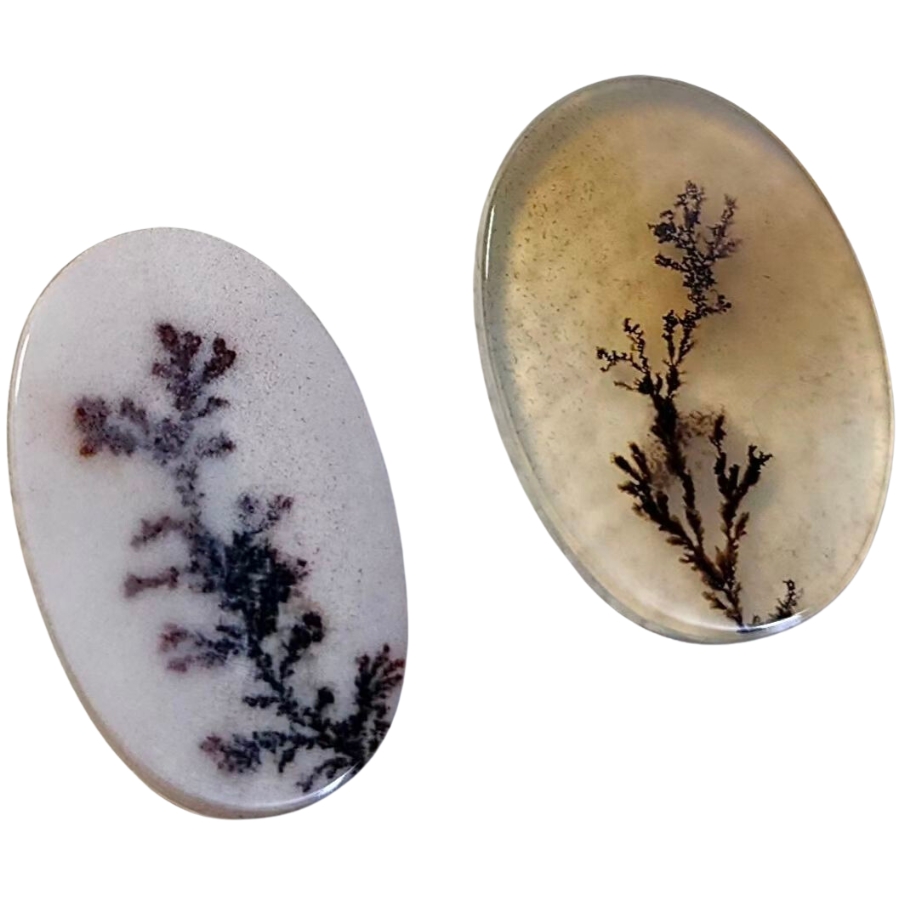
Dendritic agate is known for patterns that look like tiny trees or shrubs. Like moss agate, these patterns aren’t actual plants. They’re made of minerals, mostly manganese or iron oxides.
When you look at a dendritic agate, it’s like peering into a miniature forest or a frosty winter landscape.
The base of the stone is usually translucent to opaque, and the “dendrites”— those tree-like patterns— are often black or brown.
When it comes to how much dendritic agate is worth, it can vary. The more detailed and distinct the patterns are, the more it’s usually valued.
In some cultures, dendritic agate is believed to bring fullness and richness to life.
Crazy Lace Agate
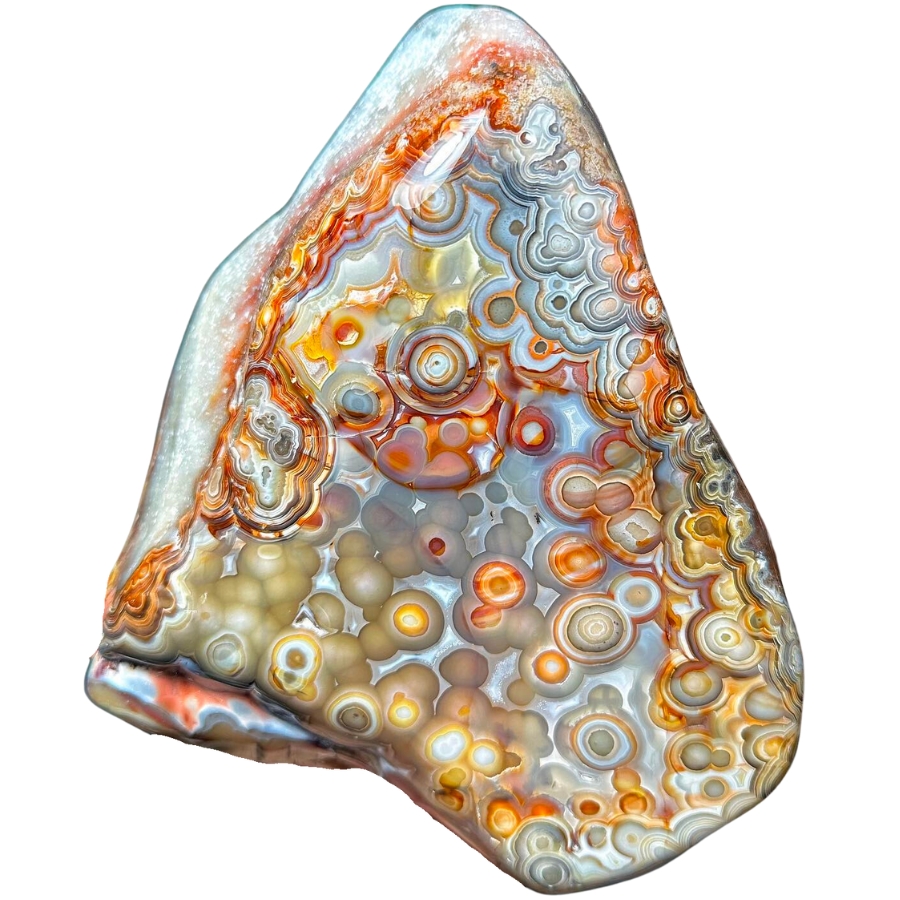
Crazy lace agate is like a party in a rock! It’s got swirls, circles, and all sorts of wild patterns dancing across it.
Its colors can be a mix of red, orange, yellow, and brown, and sometimes even a bit of gray or white.
What makes crazy lace agate stand out is its vibrant and complex patterns. No two pieces are the same. This distinctiveness is a big reason why it’s so valued.
Despite its wild and ‘crazy’ appearance, it’s sometimes called the “Laughter Stone” or “Happy Lace” because of the joy and positive vibes it’s believed to bring.
Laguna Agate
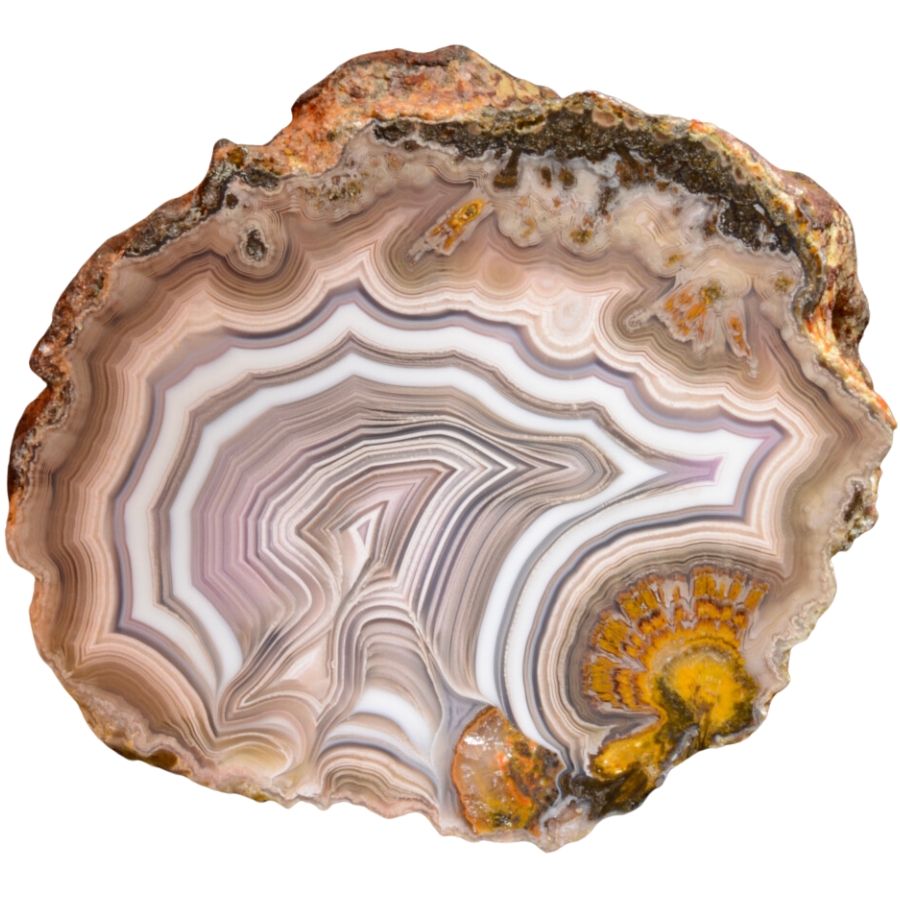
Laguna agate has incredibly sharp and fine banding. It has layers of red, orange, pink, yellow, and sometimes even purple and white all stacked in neat, tight bands.
These bands can form eye-catching patterns, like swirls, loops, and even landscapes.
The different colors of its bands come from various minerals present in the water at the time of its formation.
Laguna agate is considered one of the finest agates in the world due to its exceptional banding. This high regard among agate varieties makes it a prized possession for collectors.
Condor Agate
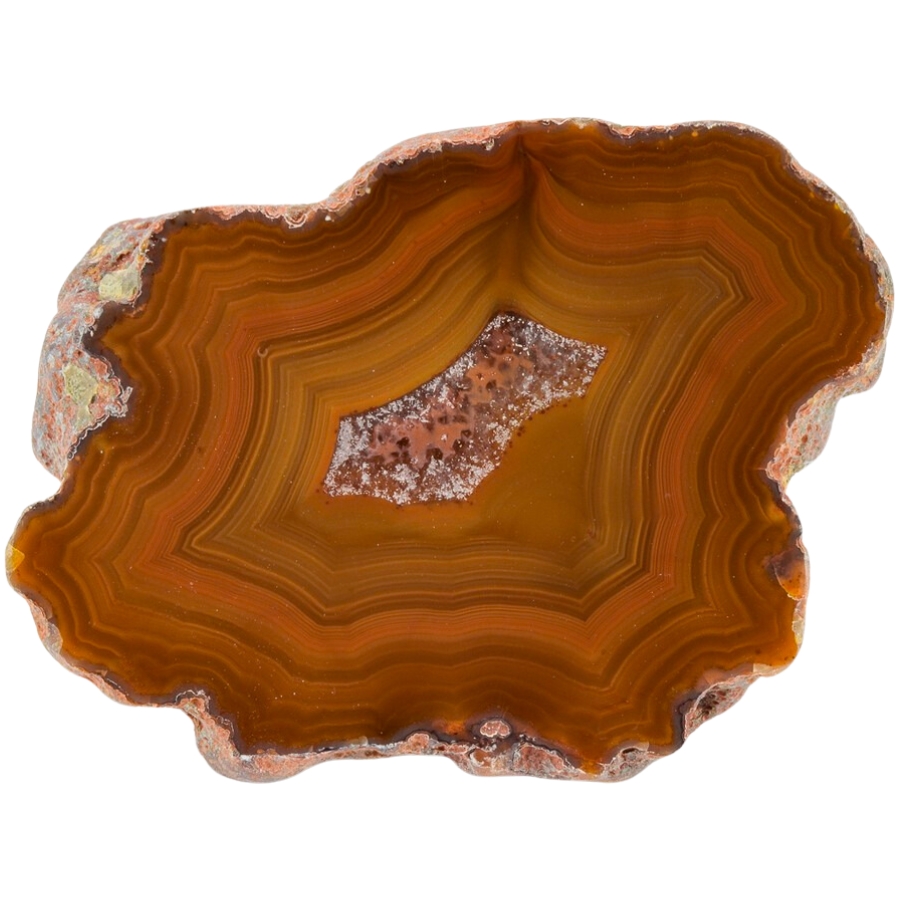
Condor agate is a real standout. It’s known for its bright, vivid colors and complex patterns.
It has reds, oranges, yellows, and sometimes even blues and greens all swirling together. These colors form in bands or in more random, artistic patterns.
The intensity and variety of its colors is what makes condor agate so special. It’s often used by artists and craftsmen who want to make a statement with their work.
Condor agate’s bold colors and patterns can turn a simple piece of jewelry or art into something really eye-catching.
Fortification Agate (Banded Agate)
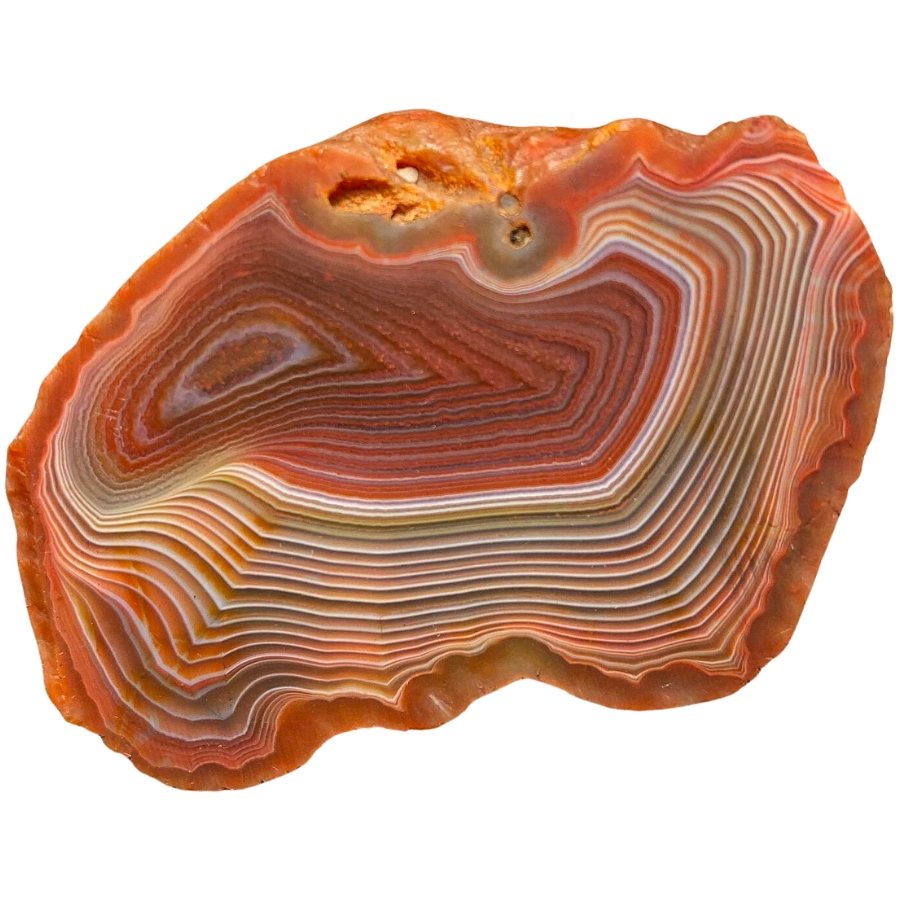
Fortification agate gets its name because the patterns inside it look like the aerial view of a fortified city.
Imagine seeing bands of color forming shapes that look like walls, with sharp angles and curves. They are usually in different colors, making each layer stand out.
If fortification agate is valuable, it’s because of its distinct patterns and colors. Its unique look makes it sought after for jewelry and as a collector’s item.
The clearer and more defined the patterns, the more valuable the stone can be. Some people also believe it can help with relaxation and calmness.
Iris Agate
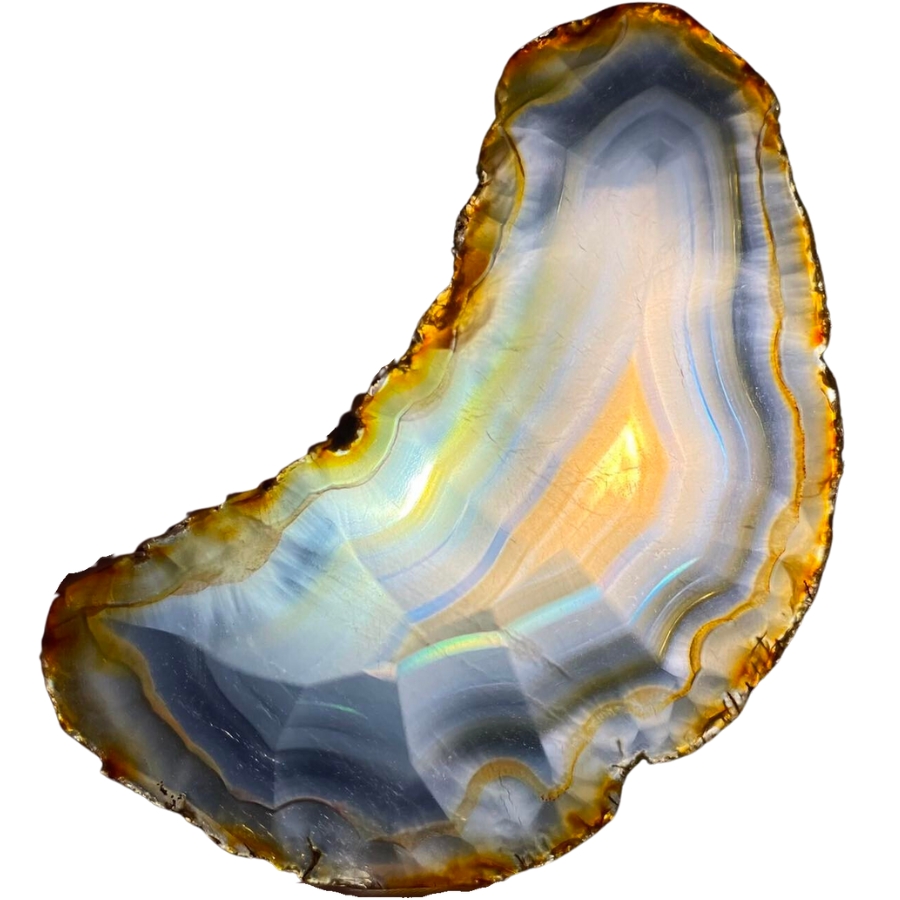
Iris agate looks like a regular agate at first, but when you hold it up to the light, something amazing happens. It shows all these rainbow colors, like light passing through a prism.
This is because it has very thin layers of silica, and when light hits these layers, it splits into all the colors of the rainbow.
The formation of iris agate is similar to other agates, but its layers are super thin, which is what creates the rainbow effect.
The value of iris agate comes from its unique ability to show these colors. In the past, people even used to think it had magical properties because of the way it showed colors. They saw it as a stone of good luck and wonder.
Plume Agate
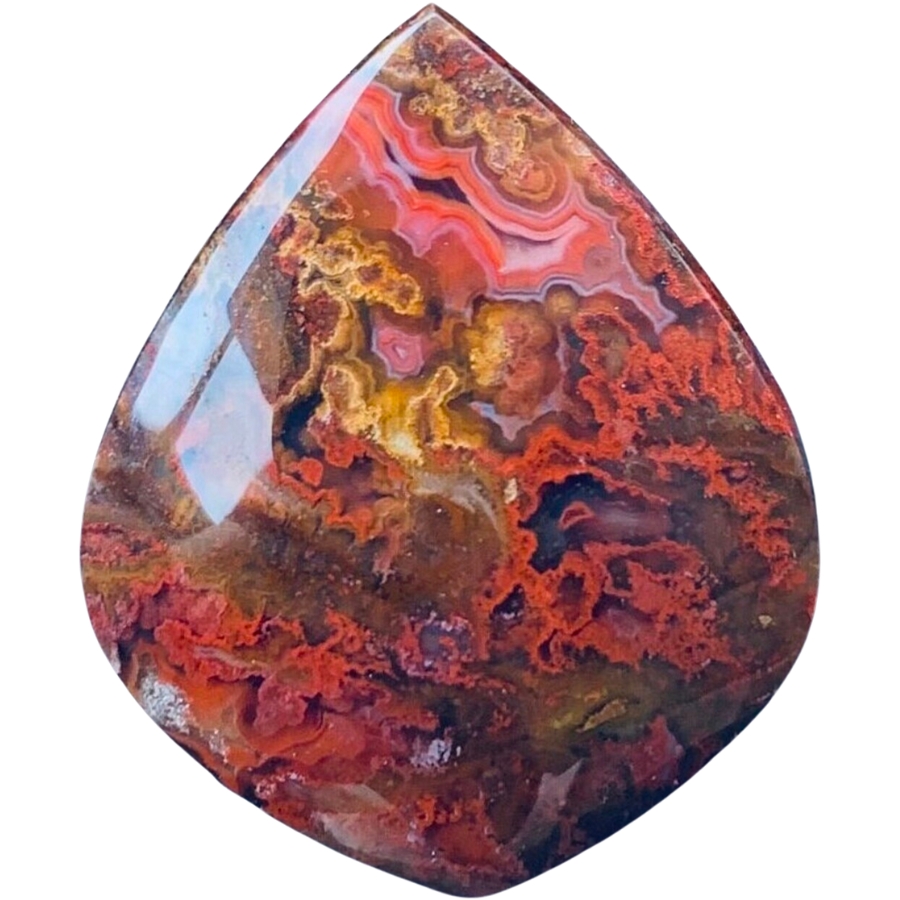
Plume agate gets its name from its patterns that look like soft, feathery plumes. These plumes can be in all sorts of colors: red, black, green, or yellow, set against a translucent or opaque background.
The way these plumes seem to float in the stone makes it look like a frozen underwater scene or like feathers caught in a breeze.
The plumes are made of minerals like manganese or iron oxide, which get trapped in the silica during the agate’s formation and create the feathery patterns.
The price of plume agate can vary depending on how clear and intricate the patterns are. The more detailed and colorful the plumes, the more the stone is usually worth.
Picture Agate (Scenic Agate)
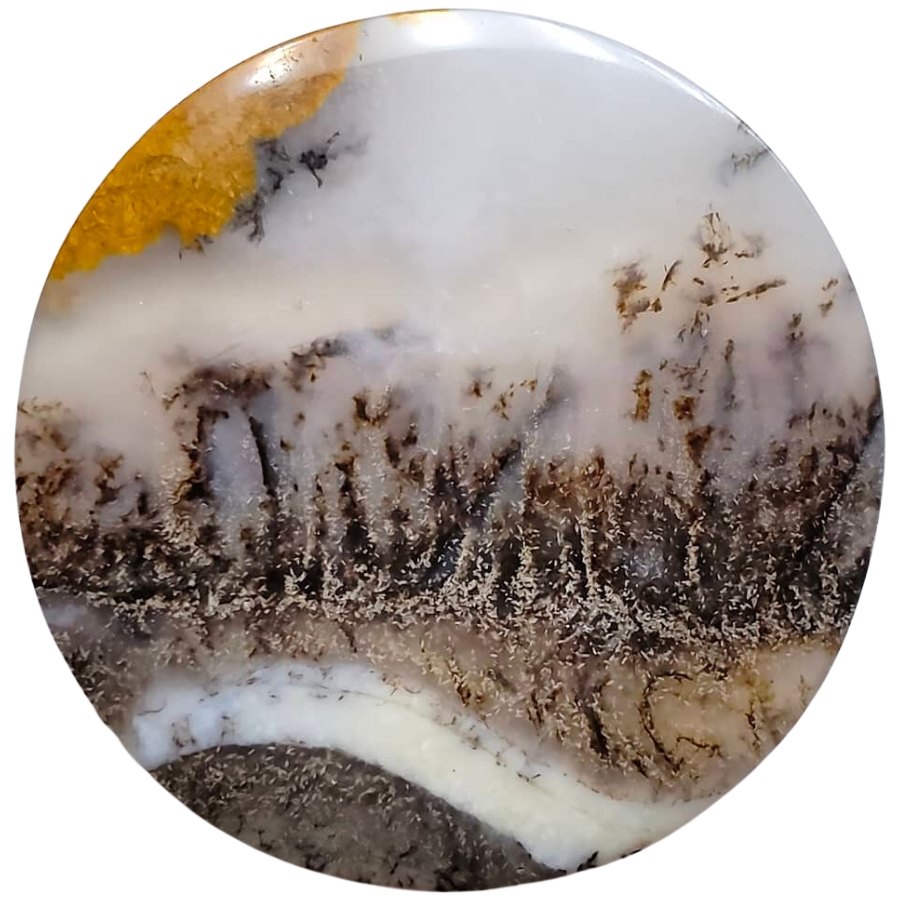
Picture agate is like a snapshot of nature captured in stone because it looks like it has pictures or scenes right inside it.
These “pictures” are actually natural patterns that resemble landscapes, mountains, trees, or even skies. They are usually in different shades of brown, white, and gray against a more translucent background.
The different patterns in picture agate or what’s also called scenic agate are made by various minerals in the water filled with silica that forms it.
If you’re thinking, “What is picture agate worth?“, its value comes from how distinct, clear, and detailed the natural “pictures” are.
Turritella Agate
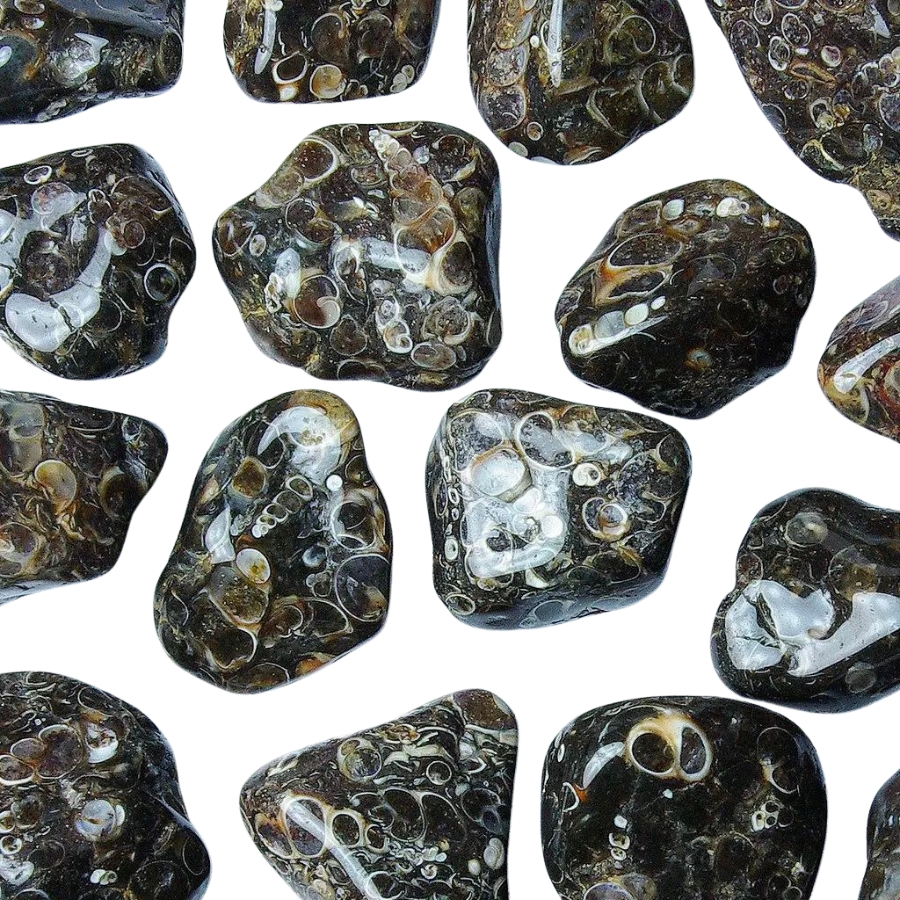
Turritella agate is not your typical agate because it’s full of fossilized snail shells! The shells belong to a creature called Turritella, a type of sea snail.
These shells are tightly packed and create a pattern that looks like a bunch of tiny, swirling towers. The background of the agate is usually a dark, earthy color, which makes the white or cream-colored snail shells really pop.
Over millions of years, these snail shells got buried in sediment and eventually became fossilized. As time went on, silica-rich water flowed through the sediment, turning it into the agate we see today.
The value of turritella agate comes from its unique blend of geology and history. More than a pretty stone, it’s a piece of ancient life preserved in rock.
Fairburn Agate
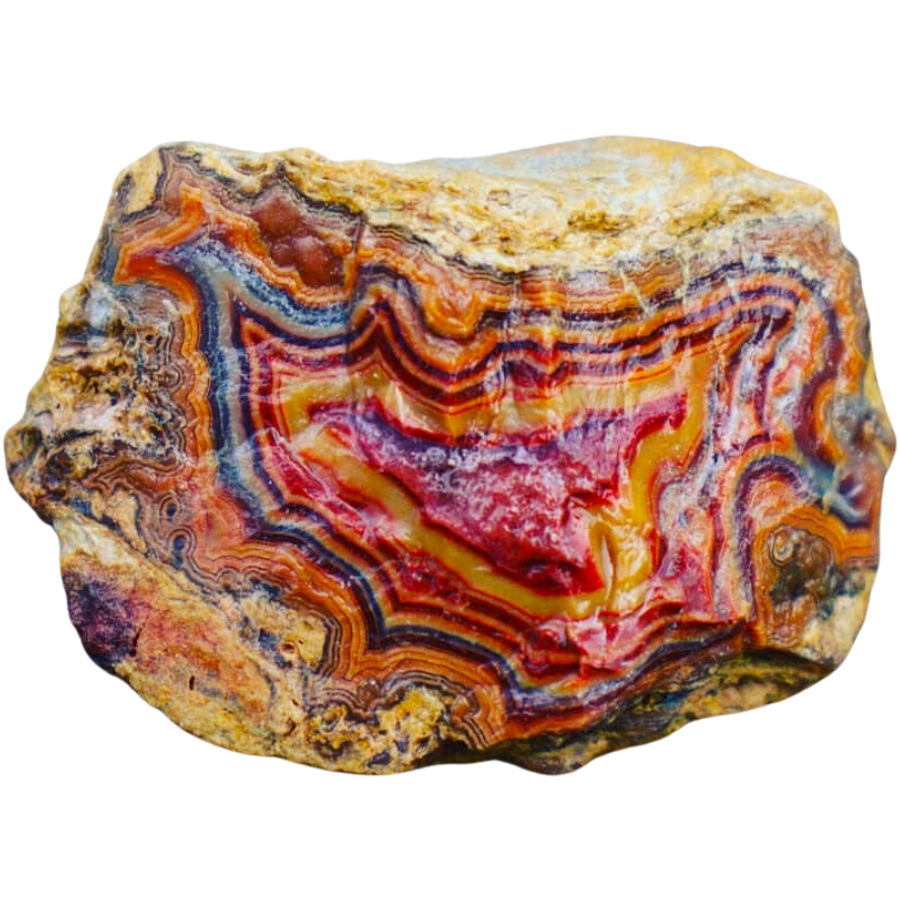
Known for its intricate patterns and bold colors, Fairburn agate is another fascinating type of agate. It usually has bands and swirls of different colors like red, yellow, orange, brown, and sometimes even pink or purple.
What’s special about these patterns is they often look like they’re in layers, creating a 3D effect. It’s like looking at a landscape made of stone.
It’s named after a place called Fairburn in South Dakota. This gives a clue about where it was first discovered.
People value Fairburn agate for the skill it takes to cut and polish it, which makes the patterns and colors really stand out.
Sagenite Agate
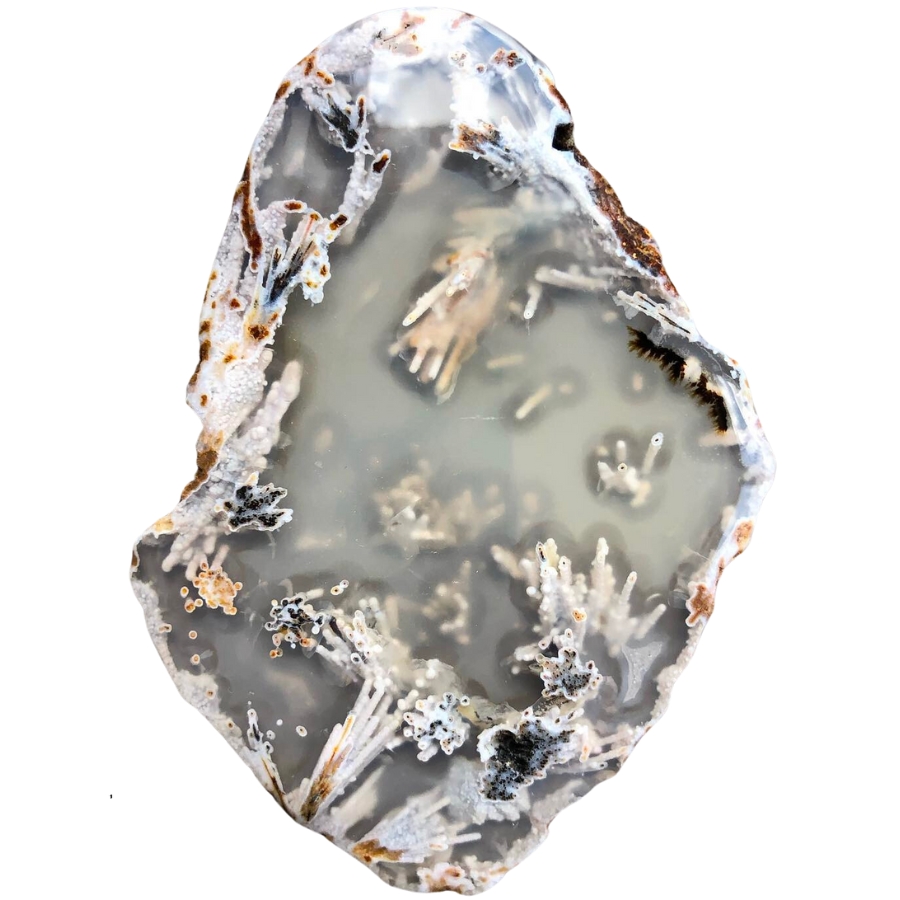
Sagenite agate has needle-like inclusions that look like tiny sprays of crystals inside it. They can be gold, silver, black, or even green, and they spread out in all directions, creating an amazing pattern.
The base of the agate is usually translucent, which lets you see these intricate needle patterns clearly.
These patterns are actually other minerals, like rutile or goethite, that get trapped inside the forming agate. These minerals grow in a crystal shape, looking like needles or hair.
Sagenite agate is often used in jewelry and other decorative items, with some people thinking that its needle patterns look like fireworks or starbursts.
Tree Agate
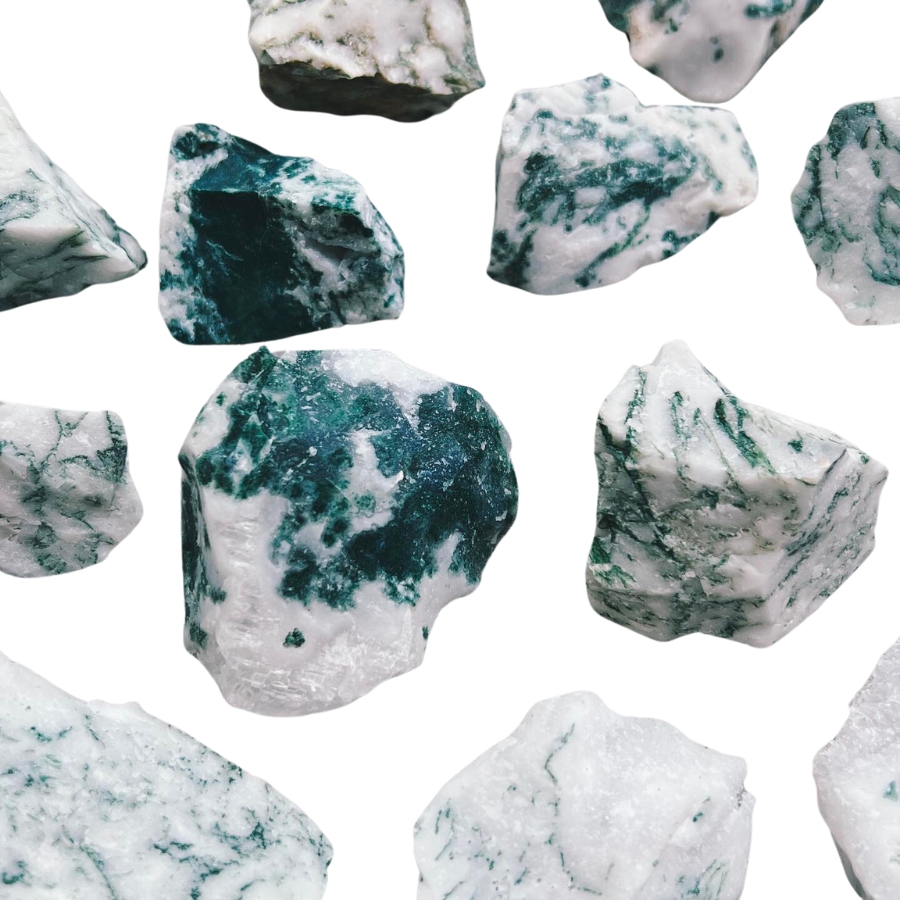
Tree agate, as its name suggests, looks like it’s got tiny trees or branches inside it. These tree-like patterns are usually green and spread out against a white or light gray background.
The green patterns aren’t actual trees, though. They’re made of minerals like chlorite or manganese.
Each piece of tree agate is different. You won’t find two that are exactly the same. It’s valued for its looks and it’s often used in jewelry and decorations.
The key factors in our recommendations are:
- The deep experience and understanding of our team about the area
- Recommendations from local groups and clubs
- How easy it is to get the a particular location
- Safety and potential hazards when collecting
- Weighing private and public locations
- The ability for both experienced and novice agate enthusiasts to find great samples
With these factors in mind we’ve been able to put together a fantastic list that just about anyone can use!
Kids. Beginners. Pros. Doesn’t matter. This book has become the go-to because it works for everyone.
Magy put it bluntly: “Identify rocks, crystals and minerals is so easy now!”
That’s not by accident, the photos are crisp, the callouts are simple, and the design is rugged enough to throw in a backpack without worrying. Whether it’s your first geode or your hundredth, this guide keeps the fun part simple: finding more treasures.
The Best Spots To Find Agates in Missouri
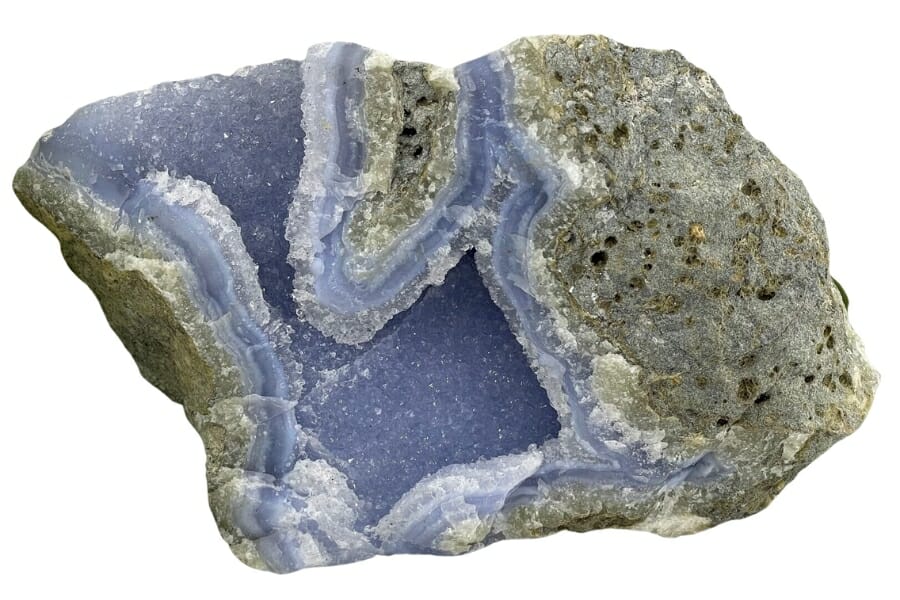
We’ve written down our suggestions for places where you find agates in each state where you can find agates. Missouri has a lot of exciting places to find gems, but not all of them have agates.
Always Confirm Access and Collection Rules!
Before heading out to any of the locations on our list you need to confirm access requirements and collection rules for both public and private locations directly with the location. We haven’t personally verified every location and the access requirements and collection rules often change without notice.
Many of the locations we mention will not allow collecting but are still great places for those who love to find beautiful rocks and minerals in the wild without keeping them. We also can’t guarantee you will find anything in these locations since they are constantly changing.
Always get updated information directly from the source ahead of time to ensure responsible rockhounding. If you want even more current options it’s always a good idea to contact local rock and mineral clubs and groups
Blackwell Mine
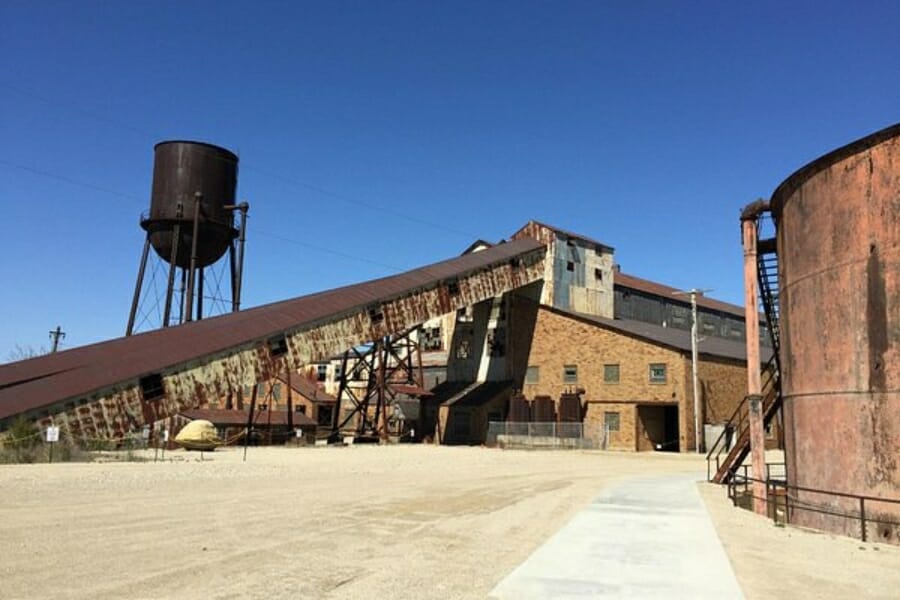
Mineral collectors and rock fans like going to the Blackwell Mine in Missouri, especially those looking for agates. This old lead mine is in St. Francois County and contains geological treasures.
The area has been known for its rich mineral deposits because there has been much geological activity. Because of this, the area around Blackwell Mine is now a great place to find minerals like quartz crystals, calcite, and agates.
One thing that makes Blackwell Mine a good place to look for agates is that it has a lot of different kinds of rocks, which makes it easier to find this valuable stone.
Where we found agates at the Blackwell Mine
Here, agates are often found inside pockets of other minerals, which can make them a surprise find among other rocks.
Crowley’s Ridge
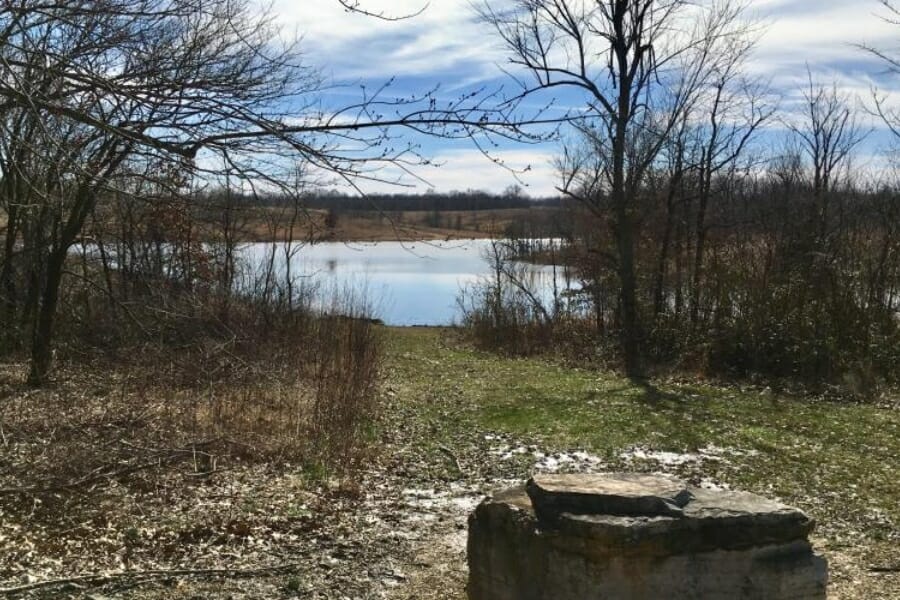
Crowley’s Ridge is a unique geological formation stretching from southeastern Missouri to Arkansas. It is made up of loess soil and high landforms.
Unlike the flood plains, the ridge comprises a series of rolling hills with a unique geological setting. This makes it an excellent place for mineral collectors and agate hunters.
The ridge is thought to have been made of wind-blown dust and materials that resist erosion, like chert and sandstone. This created an environment where agates could grow.
Where we found agates at Crowley’s Ridge
The drainage areas and eroded slopes are rich in agates and semi-precious stones. Its accessibility also makes it a popular spot for amateur and experienced rockhounds.
Haunted Ridge Mine
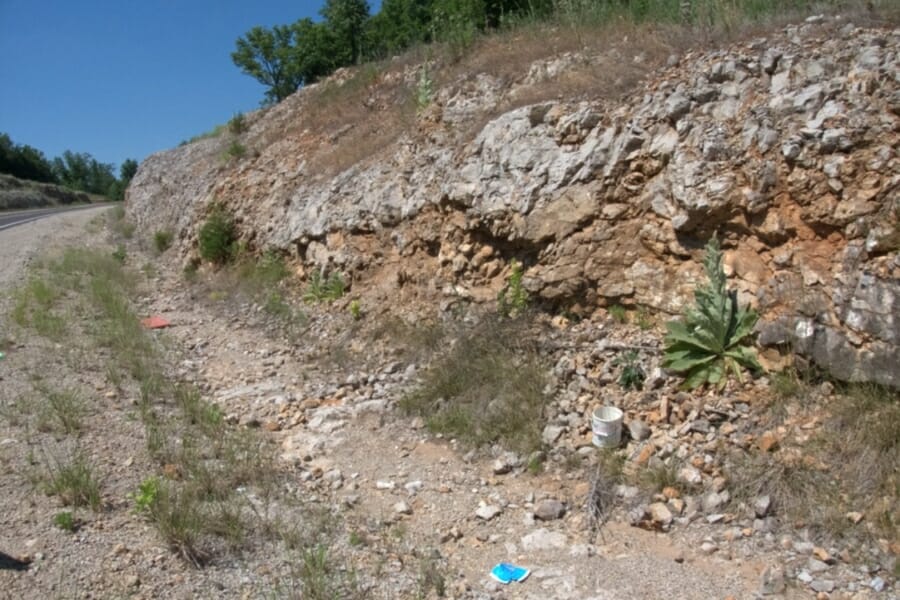
People who like agates would want to go to the Haunted Ridge Mine in Missouri. Its mineral-rich layers, probably from ancient volcanic activity, would be a good place for agates and other semiprecious gemstones to grow.
Agate hunters find Haunted Ridge Mine appealing for several reasons. First, the site’s varied topography offers numerous niches where agates may be concealed, from stream beds to rocky outcrops.
This increases the likelihood of discovering specimens with unique banding patterns and vivid colors. Second, the mine is relatively accessible yet not so well-known as to be picked over, offering a satisfying blend of convenience and untapped potential.
Where we found agates at Haunted Ridge Mine
Agates can be found in places like stream beds, rocky outcroppings, and places where there has been volcanic or metamorphic activity. Look for places where water has worn away the soil or rock, which is how agates are often found. Gravel beds and places near old mines are also good places to look.
Ozark Uplift
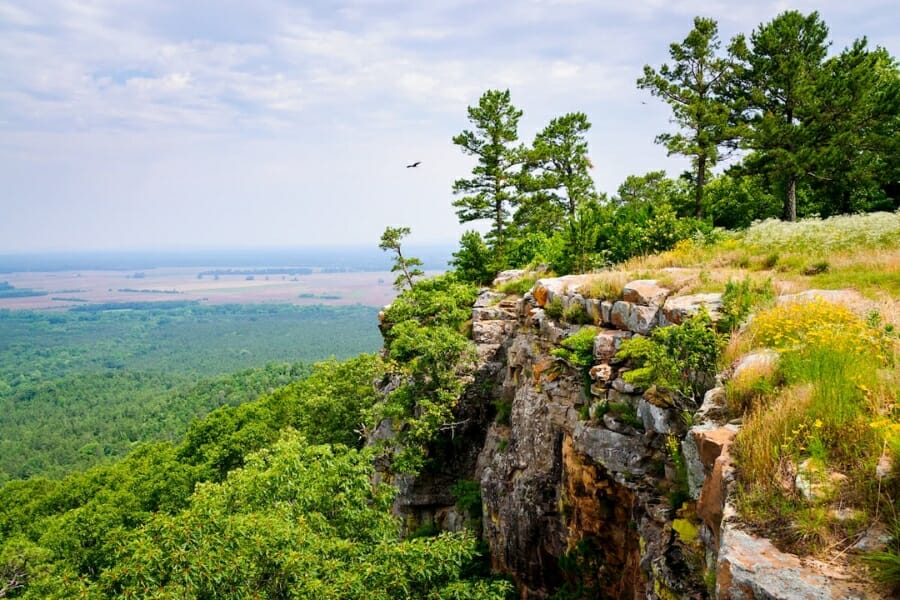
The Ozark Uplift, also called the Ozark Plateau, is an essential geological area that stretches from southern Missouri into neighboring states. The site is known for its mountainous landscape comprising caves, springs, and sinkholes.
There are many minerals and rocks to explore in the area. The geology of the Ozarks, which is full of chert and dolomite, makes it possible for agates to grow, especially in hollows and riverbeds where mineral deposits have been exposed or moved by water flow.
Ozark Uplift is a good place for agate hunters because it has many different places to look for stones. From winding creeks to rough hillsides, there are many places to explore.
Where we found agates at Ozark Uplift
Because there are so many rivers and streams in the area, agates are often found near water sources, where erosion has revealed these hidden gems.
Weber Quarry
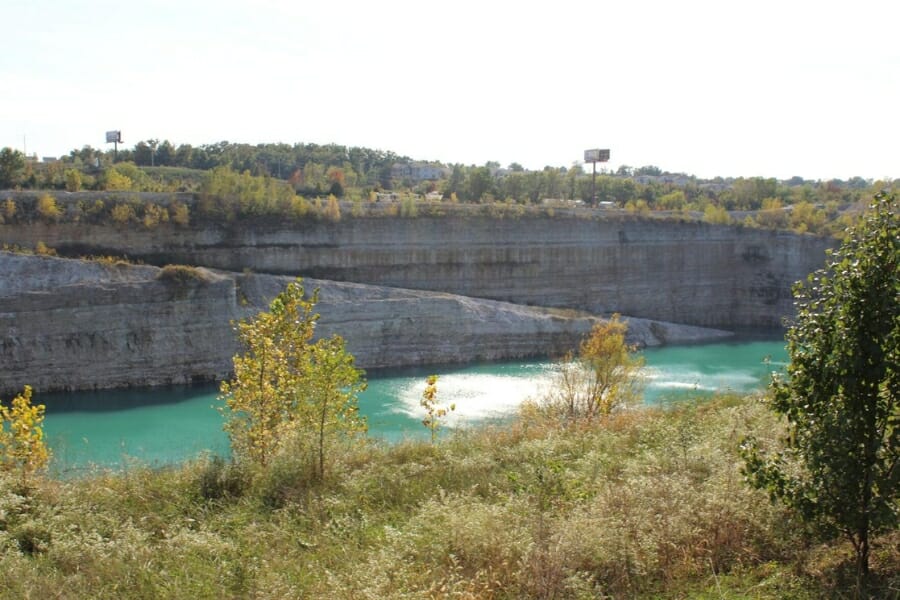
Weber Quarry is in an area with many different geological features, so it would be an excellent place for agates to form and be found. The rock formations in the quarry are perfect for crystallizing agates and other minerals.
It stands out for agate hunters because it has several easy-to-reach extraction sites. From big rock faces to small outcrops, the quarry has a lot of different geological settings where agates can form and be found.
Where we found agates at Weber Quarry
Agates usually form in holes in volcanic or sedimentary rocks; sometimes, they form with other minerals. In a quarry, the rock faces exposed by mining could have pockets or veins where agates could be found.
Other Great Places To Find Agates in Missouri
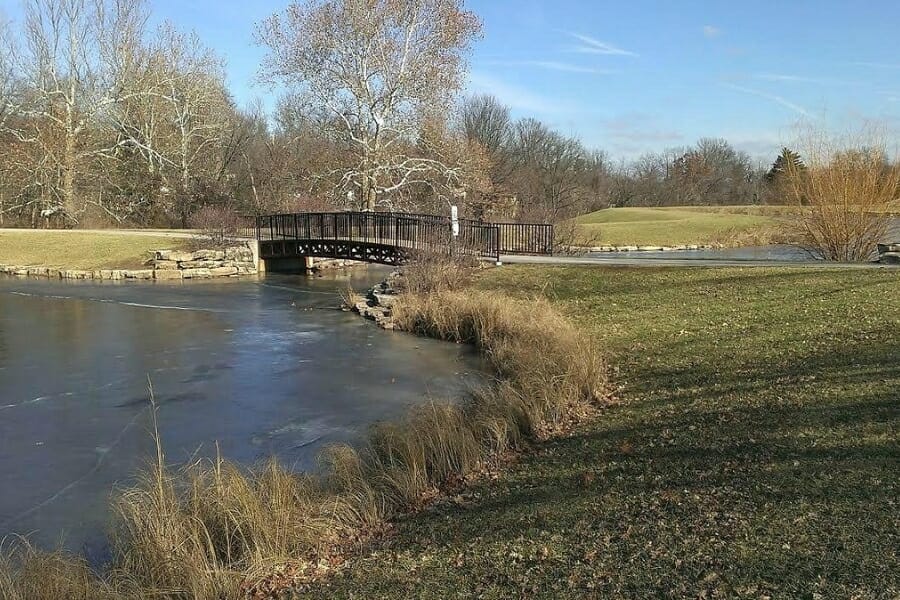
We’ve already told you where we think are the best places in Missouri to look for agates. We want you to be successful in your search, so we’ll tell you more locations in the state where you can find them. We’ve put them in order by county below:
Our recommendations by county
| County | Location |
| Bollinger | Lutesville area, all Co. gravel pits, road cuts, excavations, extending through Cape Girardeau county to the Mississippi |
| Cape Girardeau | All county area excavations, road cuts, gravel operations |
| Lincoln | Old Monroe area, area glacial sand and gravel operation |
| Moniteau | Tiff Mine |
| St. Louis | Des Peres Quarry |
| Stoddard | Dexter area, south along both sides of road to Malden, and in all regional gravel pits and streams |
Additional areas you can find agates
Here are a few more specific places where agates can be found. Because Missouri is a big state, we want to help you find these.
Quarries
Agate collectors and mineral fans often think of quarries as treasure troves for several good reasons. Quarrying naturally exposes large sections of the earth, showing a cross-section of the geological formations below the surface.
This makes finding agates, other minerals, and rocks that would otherwise stay hidden possible. The exposed rock faces make it possible to find agates in place, which are often embedded in the host rock. This makes the process of collecting exciting and rewarding.
Roadcuts
Roadcuts are great places to look for agates because they give you a unique look at the area’s geology. When a road is built through a hilly or mountainous area, a lot of earth is cut away. This can reveal layers that are full of minerals and gemstones.
These natural cross-sections give a rare look at how the landscape is made from the inside. They often show agates and other exciting pieces of geology. Since the rock layers are already exposed, it is easier for collectors to find pockets or veins where agates might be hiding.
Streams and creek
Agate collectors often go to streams and creeks because they act like natural conveyor belts that move and deposit a wide range of geological treasures. The constant flow of water sorts and reveals rocks, which could lead to the discovery of agates that have broken off from their original formations.
Waterways are a natural cause of erosion, which is how these gems get moved from where they are harder to find to where they are easier to find. This makes streams and creeks good places to look for agates along the banks, in the beds, and further downstream.
Common Agate-Hunting Questions
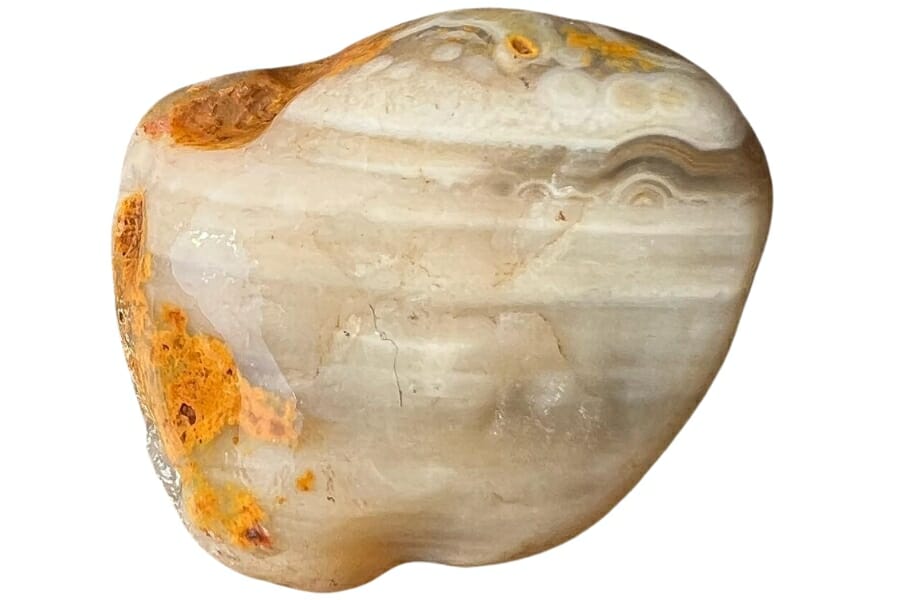
These are the most commonly asked questions when people visit Missouri to look for agates.
Is it illegal to collect agate in Missouri?
You can collect agates in Missouri if you follow the rules. When you are on private land, have permission to go in and take samples.
The Best Places To Buy Agates In Missouri
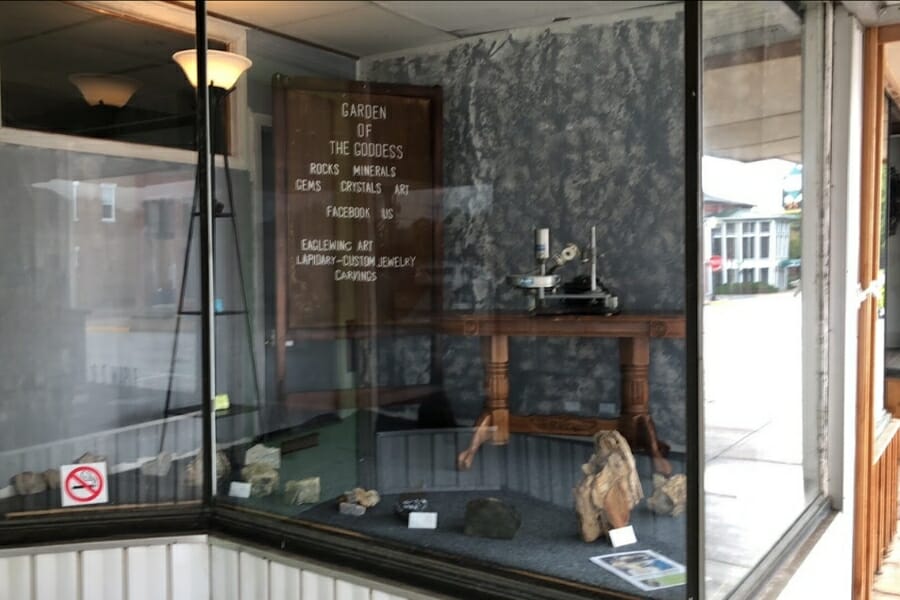
Some people don’t like spending a hot day outside looking for agates. Sometimes, you only need one piece to add to your collection or give as a gift. Here is a list of Missouri rock shops where you can easily find agates:
- Dirty Girls Crystals and Rocks – 1242 Bagnell Dam Blvd, Lake Ozark, MO 65049, United States
- Fall Creek Rock Shop – 11010 Dillon Outer Rd, Rolla, MO 65401, United States
- Garden of the Goddess – 117 S Maple St, Eldon, MO 65026, United States
- Peggy’s Rock Shop – 3705 State Hwy 76, Branson, MO 65616, United States
- STL Rocks – 2003 Cherokee St, St. Louis, MO 63118, United States

